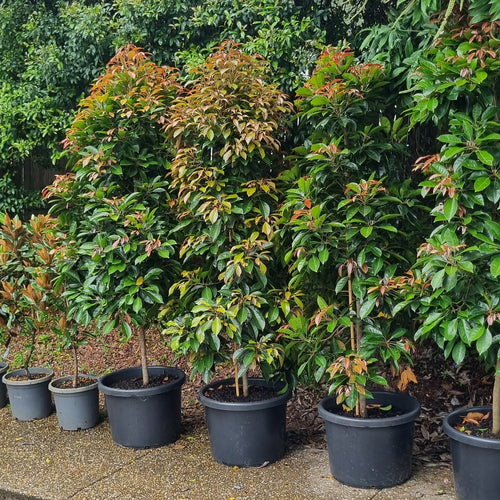
The Ultimate Guide to Growing and Caring for Native Plants
Share
Native plants are an excellent choice for gardeners who want to create a sustainable, low-maintenance, and ecologically beneficial garden. Their ability to thrive in local climates and soils makes them an attractive option for both novice and experienced gardeners. In this guide, we’ll walk you through everything you need to know about planting, caring for, and maintaining native plants.
Why Choose Native Plants?
Native plants offer a range of benefits that go beyond aesthetics. They:
- Support local wildlife, including birds, bees, and butterflies.
- Require less water and fertilizer than exotic species.
- Are resilient to local pests and diseases.
- Contribute to sustainable gardening practices by reducing chemical use and water consumption.
By choosing native plants, you’re not just enhancing your garden but also playing a part in preserving biodiversity and the environment.
Step 1: Preparing the Perfect Planting Site
The foundation of a healthy plant lies in its planting site. Here’s how to prepare:
Location
-
- Choose a spot with the right sunlight for your plant species. Full-sun plants need 6–8 hours of sunlight, while rainforest species prefer partial shade.
- Ensure good drainage to prevent waterlogging.
Digging and Soil Prep
-
- Dig a hole 1.5 times the width of the pot and deep enough to keep the top of the root ball slightly below the soil surface.
- Mix the excavated soil with organic matter if your soil is heavy or clay-based.
Step 2: Planting Your Native Specimen
Planting is more than just placing a plant in the ground. Follow these steps for success:
Root preparation
- Gently tease out or prune circling roots to encourage outward growth.
- Handle sensitive species like Grevilleas and Banksias carefully to avoid damage.
Placement
- Position the root ball so it sits 3–5 cm below the soil surface. Avoid planting too deep, which can lead to rot and structural issues.
Watering and Stabilizing
-
-
-
- Water thoroughly after planting to settle the soil.
- Apply mulch (3–5 cm thick) around the base, keeping it away from the stem to prevent rot.
-
-
Step 3: Post-Planting Care
Native plants need some TLC during their establishment phase.
Watering
- Summer: Water every 2–3 days for the first 2–3 weeks. Reduce to occasional watering once new growth appears.
- Winter: Water thoroughly at planting and then only if the plant droops or during unseasonably hot weather.
Mulching
- Use organic mulch to retain moisture, regulate soil temperature, and suppress weeds.
- Replenish mulch regularly to maintain a 3–5 cm thickness.
Step 4: Avoid These Common Mistakes
Even experienced gardeners can fall into these traps:
Overwatering:
-
- Native plants prefer to be slightly underwatered than overwatered.
- Watch for yellowing leaves or soggy soil as signs of overwatering.
Planting Too Deep:
-
- This can lead to rot and structural weakness.
Using the Wrong Fertilizer:
-
- Avoid high-phosphorus fertilizers, especially for Proteaceae species like Banksias and Grevilleas.
Step 5: Long-Term Maintenance
Keep your garden thriving with these tips:
- Pruning: Lightly prune after flowering to encourage new growth.
- Pests and Diseases: Use eco-friendly solutions like neem oil for pests. Improve airflow to prevent fungal infections.
- Fertilizing: Use low-phosphorus fertilizers only for sensitive species. Rainforest natives can tolerate general-purpose fertilizers.
Step 6: Monitoring Plant Health
Check your plants regularly for:
- Healthy Growth: Vibrant foliage and new shoots.
- Signs of Stress: Drooping, yellowing leaves, or stunted growth. Adjust care as needed.
FAQs: Your Native Plant Questions Answered
-
How do I know if I’m overwatering?
- Yellowing leaves and soggy soil are common signs.
-
Can I plant during a heatwave?
- Avoid extreme weather. If necessary, plant early in the morning and water deeply.
-
Do all natives need native fertilizers?
- No. Some species tolerate general-purpose fertilizers, but phosphorus-sensitive plants need low-phosphorus options.
Why Native Plants Are Worth It
From their resilience to their ability to support local ecosystems, native plants are a rewarding addition to any garden. With minimal maintenance and care, they provide beauty and ecological value that lasts for years. By following this guide, you’ll be well-equipped to create a thriving native garden.
Ready to Get Started?
Explore our range of native plants and find the perfect species for your garden. With the right care and knowledge, your native plants will flourish, bringing life and beauty to your outdoor space.
